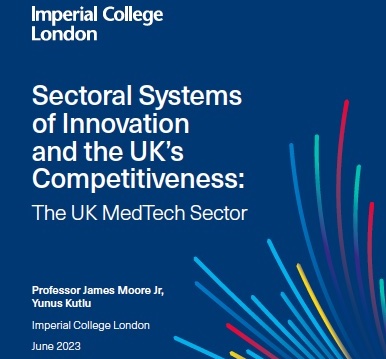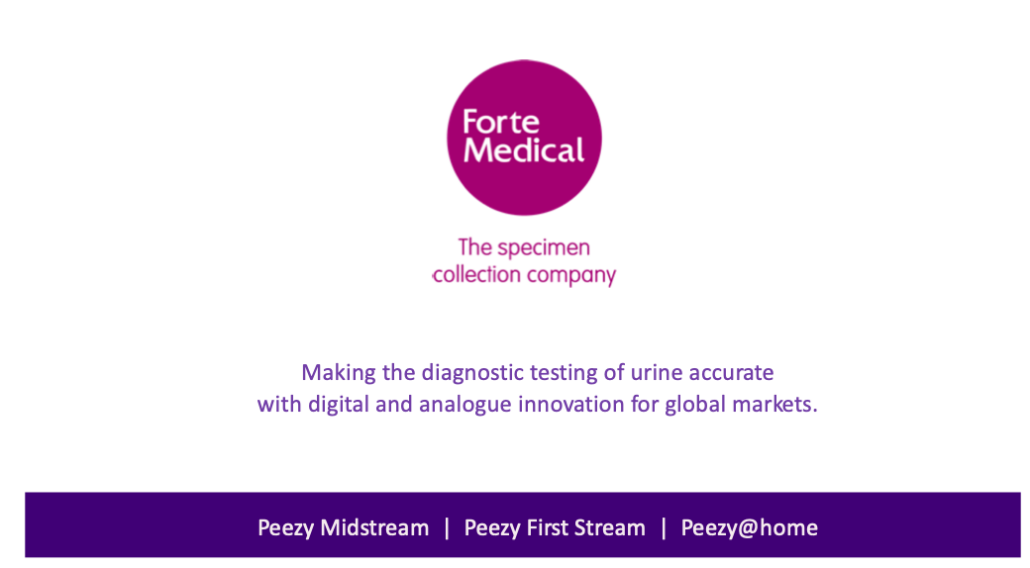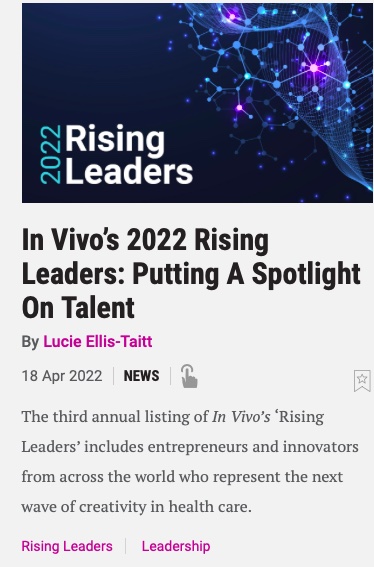The inaugural speech delivered by Mr Matt Hancock upon his appointment as Secretary of State for Health, focused quite rightly on the acceleration of preventative practice and the adoption of novel technology. Forte Medical welcomes this approach … if it happens.
It is high time to highlight and seriously consider the problems behind historic innovation adoption across the NHS because examples of what works – and just as importantly what doesn’t – can only serve to steer the powers that be to develop a better way. Our game-changing urine collection technology, which many rightly observe “has been around for years” is a prime example of how and why changes need to be made.
The NHS has long enjoyed international recognition for its vision and offering; yet Forte Medical has endeavoured to work with the NHS for over eight years – the outcomes of which more later – but the difference in our experiences of engaging in the US healthcare sector through the ABHI Trade Mission is palpable and there is much that could be learnt from their approach.
In the US, those of us attending with the ABHI are given the opportunity to present an “accelerator pitch” to leadership and key stakeholders of leading healthcare providers. Clinical, Medical and Nursing Directors, Patient Safety, Infection Control, Finance and Procurement will gather to meet us and listen to what we have to say. They get it – and are not afraid to try something new. In a few short months, Forte Medical has not only evaluations live with a number of leading providers, short-circuiting the equivalent process endemic here in the UK, but sales to laboratories that serve the health insurance market.
In the absence of NHS Leadership willing to accept an equivalent scheme where the AHSN Network may short-list and present the most compelling innovations every quarter, other steps must be taken to make such introductions seamless and effective.
Happily there have been successes for us over the past eight years. The excellent clinical results around Peezy Midstream are being recognised; thanks to the work of the ABHI, the AHSNs and a handful of diligent Healthcare Professionals, adoption is becoming a reality.
Meanwhile, I offer to those in the driving seat some examples of where, to the detriment of clinical outcomes, patient safety and yes, cost savings, inertia has proven easier to embrace than change. This in itself is where change is most needed.
2013: Pennine Acute Hospitals NHS Trust: A peer reviewed and published clinical trial of 104 male and female patients delivered a reduction in urine specimen contamination from a Trust average of 23% to 6%. The Abstract presented at the World Congress of Endourology and the Societe International de Urologie, surmised that: “Peezy is a welcome innovation by patients. The improvement in possible unreliable results was impressive, suggesting a significant financial saving due to the common nature of the investigation in LUTS assessments.”
At that time Peezy Midstream could have delivered direct savings to the Trust of £160,000 and indirect savings of £3.2m taking into account outlying costs of repeat appointments and tests. Procurement was disinterested, citing specimen collection as a non-priority and their position in Special Measures as prevention to the adoption of anything new (just when it was probably most needed).
2015: Barts Health NHS Trust: Professor Frank Chinegwundoh has Championed Peezy Midstream since he began a trial of 200 patients in his own clinic at the Royal London. He publicly presented interim results proving a reduction in historic contamination rates of 23% to 1.5% across 66 patients, pointing to significant clinical and cost improvements for the whole Trust. Despite his best efforts and support from the Trust’s Microbiology team, he has struggled to complete the evaluation. We have attempted to engage with antenatal to transfer the evaluation there but they, together with procurement and overall Trust leadership remain elusive. Are potential direct savings of £214k and indirect of £4.3m not worth investigating?
2016: Infection Control Director, Home Counties NHS Trust: The UK’s first Infection Control Director was familiar with Peezy Midstream, having spent 18 months setting up a trial that never happened at a London Teaching Hospital. On reading of his new appointment, we contacted him to see if he would implement his earlier work on this study at the new NHS Trust. The answer perplexed: if we sponsored his Conference at the RSM to the tune of £10,000 he would ensure the trial took place with good results. We thanked him and declined.
2018: A South West NHS Trust: The Head of Gynaecology and Obstetrics at this General Hospital was keen to trial Peezy Midstream to counter the 9% urine specimen contamination rate cited in antenatal, where screening accuracy is so important. A protocol was produced and trial conducted; the resulting paper citing tangible clinical improvements and cost savings with a potential for reduced broad spectrum antibiotic prescribing. This Abstract was peer reviewed, published and presented at a leading Conference earlier this year.
We asked the Clinical Lead if given the evidence and benefits she would now adopt Peezy Midstream? She demurred, saying by email that “Following the study, the way in which the wee is collected improved and the midwives and HCAs started to follow the right rules of sending off only the right urines. Not as good as with a Peezie [sic], but better than before.”
A new study has shown that Peezy Midstream reduces antenatal false positives by almost 70%; by implication the HCAs are still sending off too many “right urines” wasting time, money and possibly prescribing unnecessary broad spectrum antibiotics to pregnant women. Add to this the transient nature of staff, forgotten instructions … and in other words: Your innovation works but I am not prepared to make changes and although I don’t know what happens behind the closed toilet door, I am prepared to assume that patients will listen to verbal instruction … and be damned if they don’t.
Innovation Managers in the South, North and Midlands: In 2014 and 2015, three “clinical innovation leads” from Trusts that boasted high urine contamination rates were presented with Peezy Midstream as a route to clinical excellence and cost savings. One manager refused outright to engage with an evaluation citing urine as “low priority”; the other two sat on the trial product for so long, the three-year use-by date expired.
Private providers who profit from inaccuracy and repeat testing: One of the largest private NHS laboratory providers assured us some time ago, that they would “never use or recommend use of your device; if it reduces retests to the extent you say, it will knock about half a million off our bottom line.” When I enquired as to their commitment to help the NHS treat its patients efficiently they observed “that’s the NHS’s problem, we have shareholders to answer to.”
Connecting the dots between clinician, trial, procurement and adoption
Every evaluation, every clinical trial must be conducted with the involvement and approval of all relevant stakeholders; without these interests being represented, evidence of prevention and improvements across the many facets of clinical and patient care stand not a chance of being translated into Good Practice. Thank heavens for the arrival of the AHSNs – would that they had existed in our earlier years.
The Future Operating Model (FOM) may also change things; our own Category Tower Manager Akeso&Co has visited almost every NHS lab in the country to understand their challenges. If this diligence has been mirrored across the other Consultancies involved, a more logical, efficient and pragmatic view of innovation being delivered to the NHS could become a reality.
Meantime, the money wasted for all parties in trials that go nowhere, not to mention the lost benefits that could have been delivered to patients and NHS Finances over the last five years from our own NHS GP created innovation, doesn’t bear thinking about. We believe we are nearly there; meantime, the USA calls. One way or another our perseverance will pay dividends for the one in four patients both here and across the pond, where diagnoses fail because of inconsistent urine collection methods. They deserve so much better.
- Four steps to accelerating preventative innovation within the NHSWhere innovation has arrived outside of an AHSN introduction but is desirable, ensure the appropriate AHSN is involved to better cement protocols, stakeholder interest, deliverables and adoption
- Incentivise clinical staff to embrace evaluations that, if successful will deliver tangible improvements to their work and working lives.
- Appoint “adoption” managers who will oversee the implementation of new technology so that a more seamless approach is taken with wholesale acceptance by clinical teams
- Reward private contractors on clear results and value, not volume; until then the NHS will fail to receive best endeavours in the interests of its patients – or balance sheets.







